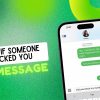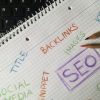How To Know If Someone Blocked You On iMessage? 5 Secret Hacks!
Apr 16, 2025

Apr 16, 2025

Apr 16, 2025

Apr 15, 2025

Apr 11, 2025

Apr 11, 2025

Apr 11, 2025

Apr 08, 2025

Mar 29, 2025
Sorry, but nothing matched your search "". Please try again with some different keywords.


Internal linking, the practice of connecting different pages within your own website, is a fundamental aspect of search engine optimization (SEO) that often gets overlooked.
By strategically placing internal links, you can enhance user experience, improve search engine rankings, and establish your website as an authority in the real estate industry.
Unlike external links, which point to pages on other websites, internal links connect pages within your own domain.
The top real estate agent websites know these links serve as signposts, guiding visitors through your website and helping search engines understand the structure and relationships between your content.
Internal links make it easier for visitors to navigate your website and find the information they need. By providing clear pathways between related pages, you can reduce bounce rates, increase time on site, and encourage visitors to explore more of your content. This can lead to higher conversion rates and improved customer satisfaction.
When it comes to SEO, it is not a one-size-fits-all situation to rank an article. Ranking an article is focused on user experience. Internal linking allows the audience to dig deeper to educate themselves further on that particular topic.
With internal linking, you are setting a clear pathway for your audience on your website so that the audience doesn’t get lost inside.
Setting a clear path helps your audience navigate through your site easily. This way, you can reduce the bounce rate from your site and increase time on your page.
Through internal linking, creating a navigation network is easy to build, but it also guides your target audience towards actual sales. Due to this, conversion rates are going to increase rapidly.
Increasing sales through internal linking is possible by strategically embedding internal links throughout your website to lead your audience deep down the funnel and convert them into sales.
So, to effectively use internal links in your website, you need to create a proper buyer’s journey and content mapping. To learn how to create a content map, check the steps below,
Develop content tailored to each stage of the buyer’s journey.
Ensure your content is optimized for the right keywords and searches.
Connect your content through internal links in a way that encourages users to move forward at their own pace.
The structure or architecture of your site and site taxonomy help you organize all the content in the menus and help you navigate the homepage more deeply. The taxonomy enables Google and its users to understand the site better.
However, the website architecture contains more than the structure of the website, so internal linking adds a separate layer of web content and pages.
The topics related to your website architecture are crawl efficiency and crawl depth. The search engine crawlers work in a pretty simple pattern.

To maximize the benefits of internal linking, carefully consider the relevance and context of your internal links.
Use anchor text that accurately reflects the content of the linked page and includes relevant keywords. Avoid excessive linking, as it can dilute the impact of your internal links and confuse search engines.
Create a logical and hierarchical structure for your internal links. Use breadcrumbs to help visitors navigate your website and understand their current location. Link to related content to provide additional context and encourage further exploration. Consider using a topical or thematic approach to organize your internal links, grouping pages based on similar topics or themes.
Ensure that your internal links are contextually relevant to the page they’re on. For example, if you’re writing a blog post about “Top Neighborhoods in [City],” link to pages that discuss specific neighborhoods within that city. This helps visitors find related information easily and improves the overall user experience.
Use anchor text that is relevant to both the linked page and the current page. This helps search engines understand the relationship between the pages and can improve your rankings for relevant keywords. Avoid using generic anchor text like “click here” or “more information.”
Prioritize linking to your most recent content to signal to search engines that your website is updated and active. This can help boost the visibility of your new pages in search results.
If you have created pillar content (comprehensive guides or articles on key topics), link to this content from other relevant pages on your website. This helps establish your website as an authority on the subject and can improve your rankings for related keywords.
Ensure that all of your pages are linked to at least one other page on your website. Orphaned pages, which are not linked to any other pages, can be difficult for search engines to discover and may not rank as well.
Regularly review your internal links to ensure they are still relevant and working correctly. If you make changes to your website’s structure or content, be sure to update your internal links accordingly.
By following these additional best practices, you can further optimize your internal linking strategy and improve the overall performance of your real estate agent website.

Internal linking isn’t just about connecting pages on your website – it’s about weaving a web of user experience and search engine optimization that propels your real estate business forward.
By strategically placing internal links, you become the architect of a user journey filled with informative content and clear pathways to desired actions.
Imagine a potential client searching for “homes with pools in [your city].” With a well-linked website, your blog post on the “Benefits of Owning a Home with a Pool” seamlessly guides them to your listings page featuring pool-equipped properties. This not only keeps them engaged but showcases your expertise and increases the chance of a conversion.
Internal linking strengthens your website’s foundation in the eyes of search engines. Think of these links as votes of confidence for your best content. By strategically linking to high-quality resources, you distribute “link equity” throughout your site, boosting the ranking potential of all your pages.
Internal linking may seem like a simple technicality, but its impact is far-reaching. It’s an ongoing process that requires vigilance and a focus on continuous improvement.
By consistently optimizing your internal linking strategy, you’ll create a website that is not only user-friendly but also positions you as a leader in the competitive real estate landscape. So, take control of your website’s architecture and weave a web of success with internal linking.
Nabamita Sinha loves to write about lifestyle and pop-culture. In her free time, she loves to watch movies and TV series and experiment with food. Her favorite niche topics are fashion, lifestyle, travel, and gossip content. Her style of writing is creative and quirky.
View all Posts
How To Know If Someone Blocked You On iMessag...
Apr 16, 2025
7 Website Design Mistakes That Are Hurting Yo...
Apr 16, 2025
Programmable Dynamic SEO for Location-Based P...
Apr 15, 2025
Google Boba Game: How To Play This Fun Game B...
Apr 11, 2025
Which Is The Best Video Search Engine Of 2025...
Apr 11, 2025

